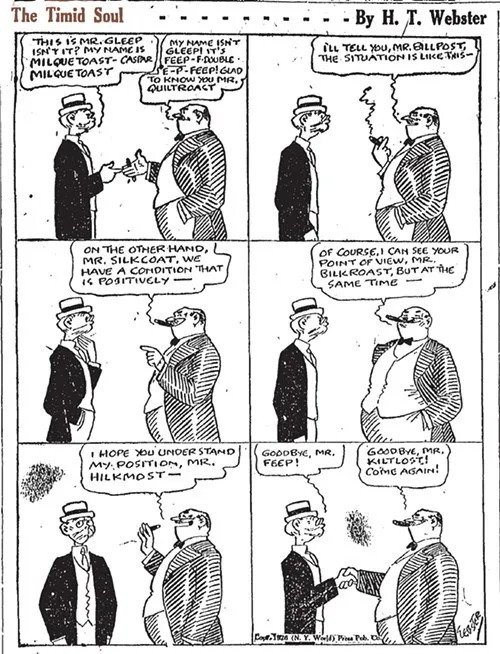You probably know nimrod as a slightly old-fashioned way of calling someone an idiot. A dope or a dimwit. But like lots of our words, it didn’t start out like that.
‘Put your hands in the air like you just don’t care’ (Nimrod by David Scott, 1832)
The OG Nimrod was a biblical figure. In the Book of Genesis, he’s described as ‘a mighty hunter before the Lord’. He was one of Noah’s great-grandsons, a warrior, a king, a symbol of power and skill, and an all-round over-achiever. Oh, except for the fact that he commissioned the Tower of Babel which, if you know your bible, didn’t end well. Despite that, for centuries, the word ‘nimrod’ was used to mean a hunter or someone with great prowess.
Then Looney Tunes got involved. Yup.
In a 1948 cartoon, What Makes Daffy Duck, Daffy calls Elmer Fudd a ‘nimrod’. Not because Elmer was a great hunter – quite the opposite. He was famously incompetent, and Daffy was being hella sarcastic. Bugs Bunny also used the word later, calling Yosemite Sam ‘the little Nimrod’ in Rabbit Every Monday (1951).
But here’s where it gets interesting: the audience didn’t always get the reference. In fact, most people didn’t know the biblical meaning. So while they understood that Daffy and Bugs were mocking Elmer/Yosemite, they took ‘nimrod’ to mean idiot, not hunter. And because Looney Tunes was such a massive part of pop culture at the time, that misinterpretation stuck.
This is a great example of how language evolves in unexpected ways – not because of formal definitions or careful usage, but because a cartoon duck and rabbit made high-brow jokes that nobody got.










